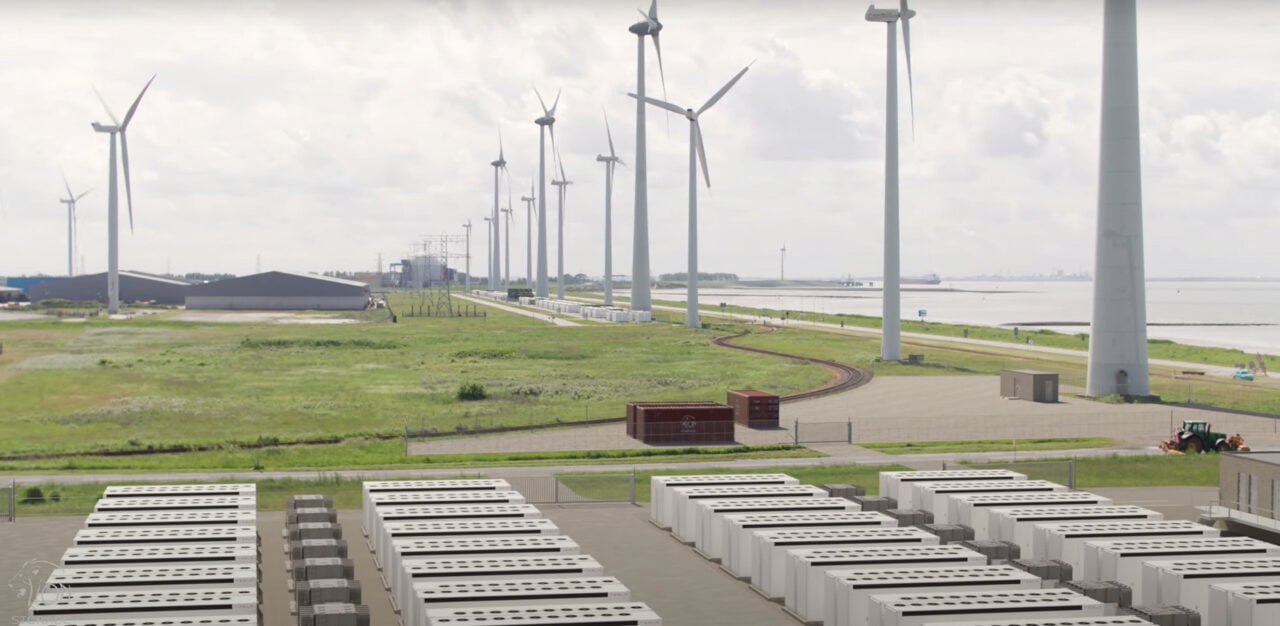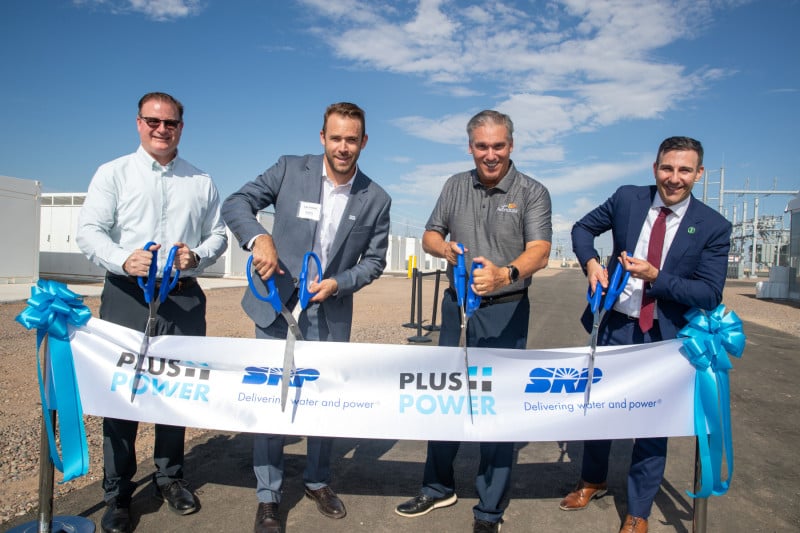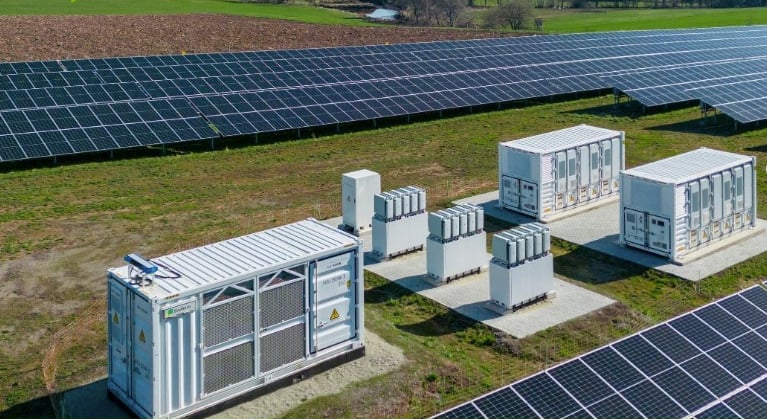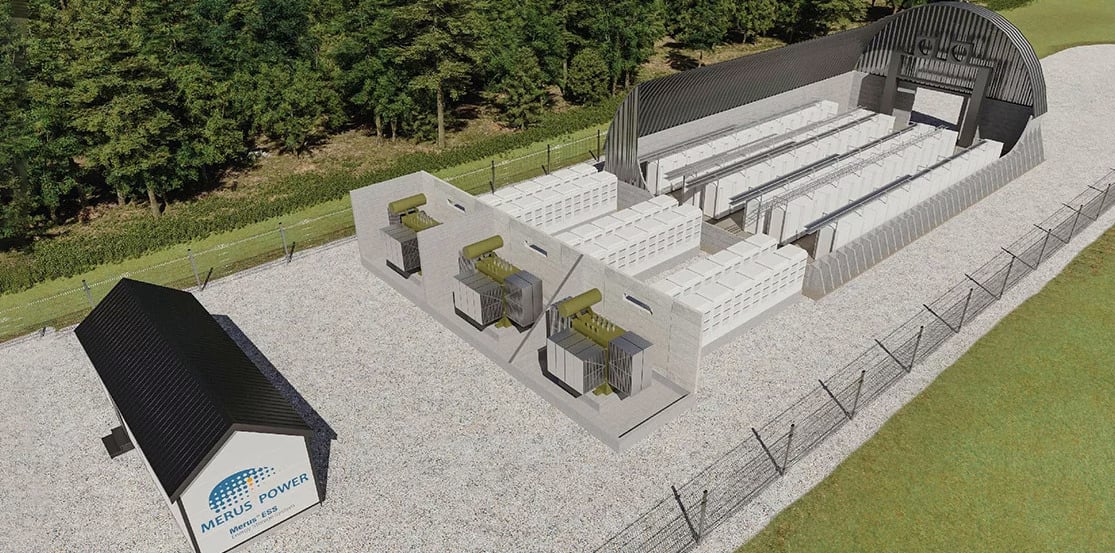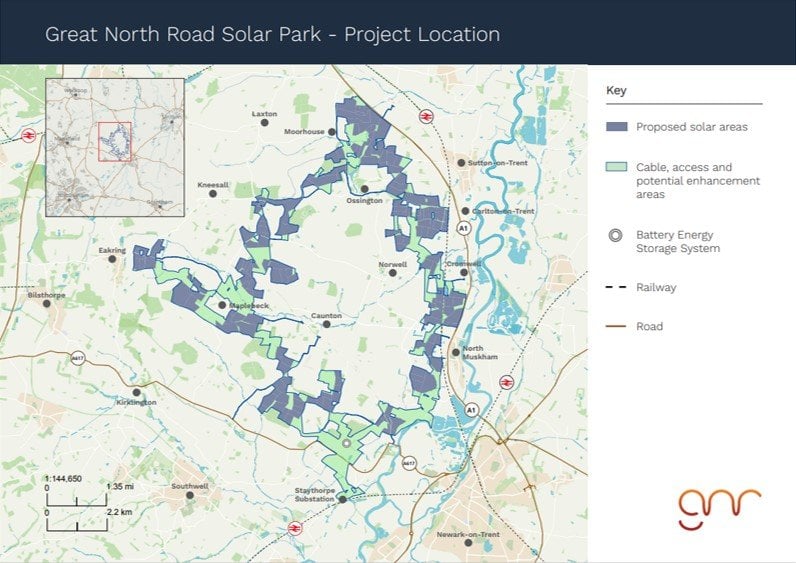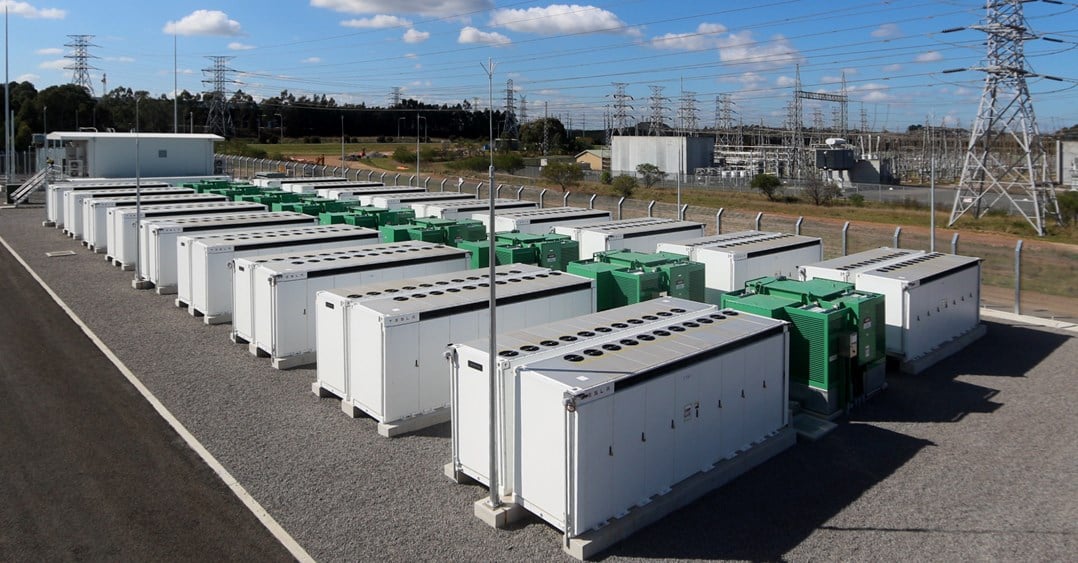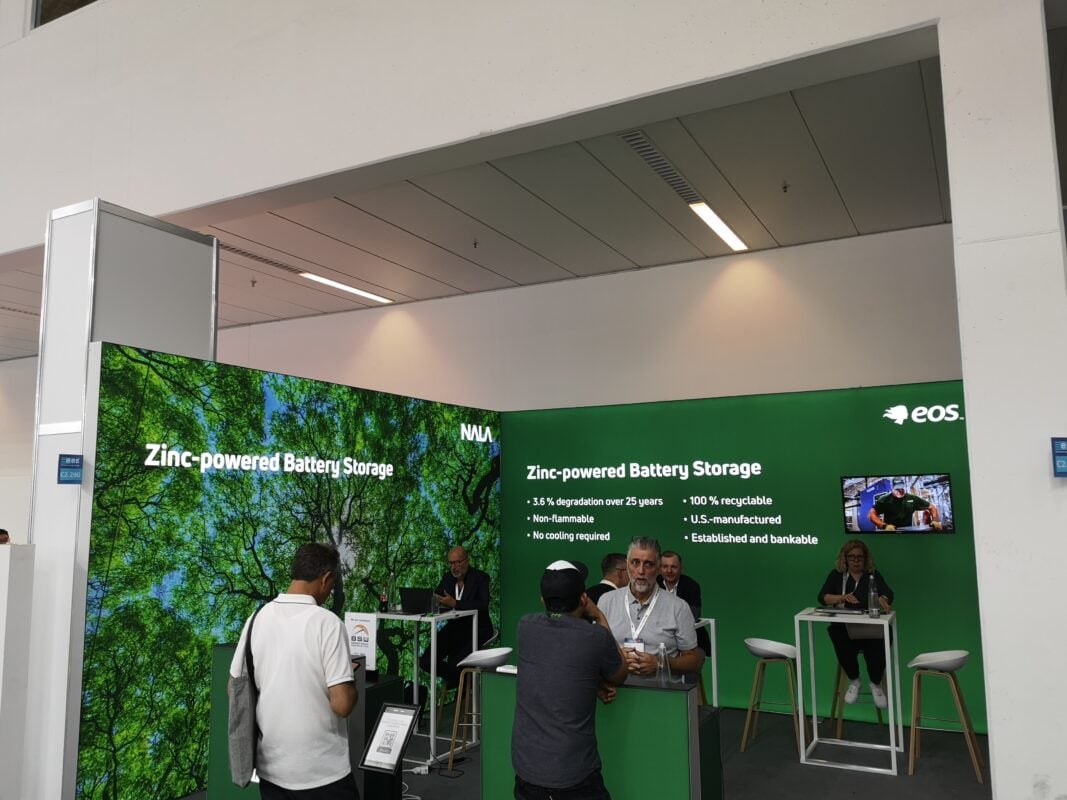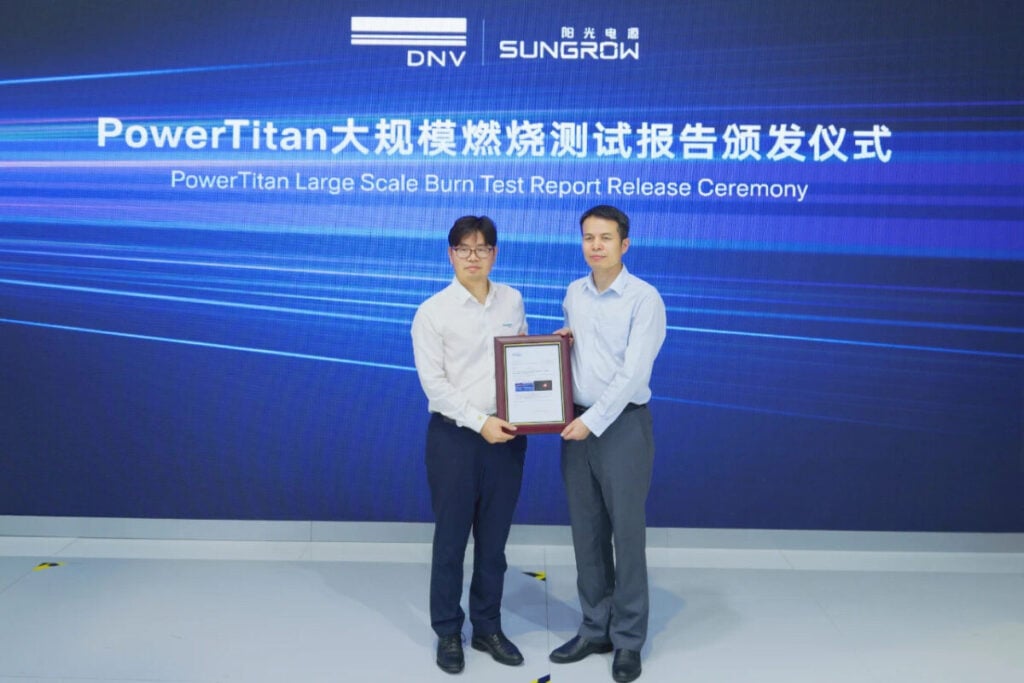Construction is underway by Statkraft at Ireland’s first 4-hour grid-scale battery energy storage system (BESS) in County Offaly, in Ireland’s midlands.
The 20MW, 4-hour BESS solution is supplied by a global market leader in utility-scale energy storage solutions and services, Fluence. It will be co-located with the company’s 55.8MW Cushaling Wind Farm, which too is currently under construction.
As in other countries, grid capacity in Ireland is becoming scarce, so as Statkraft develops further onshore wind and solar projects, there is a good opportunity to sensibly locate storage to mitigate the risk of local constraints and support congestion management.
The Cushaling battery project will enable energy from renewable sources in the midlands area to be stored during times of low demand, reducing costly curtailment, and later dispatched at times of peak electricity demand.
It will also support Ireland’s TSO EirGrid in ensuring network stability by delivering fast-acting system services as more non-synchronous renewable generation comes online. Additionally, by securing a 10-year capacity market contract, the project will contribute towards energy security in Ireland.
Greater trading opportunity
The Cushaling BESS and wind farm projects together received planning approval in September 2020. The Statkraft team’s decision to size the storage system was shaped by the market conditions in Ireland at the time, available site size and technology maturity looking beyond 2-hour duration.
As with Statkraft’s first two BESS projects in Ireland, Cushaling is co-located with wind generation. Image: Statkraft
The team also considered how to optimise the rating of the main grid transformer to share capacity with our Cushaling wind project. While sharing of Maximum Export Capacity (MEC) grid connection capacity is unfortunately not currently permitted in Ireland, Statkraft sees significant potential in co-location/hybrid assets under the same grid connection and is urging for policy changes in this area to maximise system benefit.
While system constraints can last longer than four hours, the 4-hour Fluence system was seen as a technology we had the confidence to deliver and one that could mitigate the constraint risk. As wholesale prices have also been volatile, there is also a greater energy trading opportunity by increasing to 4-hour duration.
Following the receipt of planning permission, the next step was to secure a 10-year capacity contract that would be the anchor revenue stream to support bringing the project to investment decision. Considering the capacity market auction timelines, the T-3 2024/2025 10-year capacity auction was targeted. Bids were placed in the first quarter of 2022, and in April of the same year, the project was awarded the 10-year capacity contract.
Energy arbitrage
As the team looks ahead to our next projects, we will need to see new routes to market to incentivise longer-duration storage as well as changes to the market systems to fully allow traders to optimise asset capability. We believe there should be more favourable treatment of network charges with respect to energy storage based on its ability to offer flexibility to help shape the demand and manage network congestion.
As it stands, current network charges (namely Demand TUoS) represent a significant barrier and constrain the energy arbitrage opportunities for energy storage, thus limiting the benefits energy storage can offer to the system.
For market access for BESS in Ireland, there are currently three revenue streams: the DS3 system services market, the capacity market and ISEM energy trading opportunities. With each of these markets having its own challenges, it can come down to how an individual developer forecasts them and their risk appetite.
The early BESS projects could underpin the revenue stack using the DS3 and capacity markets, but a quick review of the current state of play shows why Ireland needs storage-specific auctions (specifically targeting longer duration) to support the Irish government’s 2030 targets of 80% of generation from renewable sources.
The current DS3 system service market regime has been in place since 2017, with regulated tariffs designed to support the 2020 target of 40% of generation supplied from renewable sources. This was achieved within a central expenditure cap of €235 million (US$254 million).
The DS3 Programme did provide a clear route to market which encouraged investment in short-duration energy storage and six years later, there is now circa 800MW of 0.5-hour, 1-hour and 2-hour BESS projects operational on the system. This scale of deployment is impressive relative to the size of the Irish system when you consider that the country’s largest single infeed remains at 500MW, at least until the 700MW Celtic Interconnector comes online. This is scheduled to take place at the end of 2026.
Tariff reduction risk
However, the DS3 market is now overheated, as evidenced by the TSO signalling downward pressure on DS3 reserve tariff rates, and scarcity scalars in the latest DS3 rate consultation that came out in late March 2024. Ireland’s energy regulator (CRU) previously cut the tariffs to avoid breaching the expenditure cap. The CRU allowed the expenditure cap to be breached last year, but the industry is again facing tariff reduction risk.
It is not clear what the tariff rates will be between now and April 2026 when the existing DS3 market is overdue to be replaced by the Future Arrangements System Services (FASS) market. All of the above leads to significant uncertainty for existing and future grid-scale energy storage investment decisions, resulting in a significant problem in respect to “missing money” required to make up the business case.
Since the Cushaling BESS secured a 10-year T-3 2024/25 capacity contract, auction derating factors have been eroding for storage. The derating factors did incentivise longer duration storage systems (which pointed the Statkraft team towards four hours), but they have since halved, and the capacity auctions are no longer providing the revenue certainty required to make an investment decision.
In late 2023, the TSO asked for industry feedback on what a long-duration energy storage (LDES) specific auction would look like via a Call for Evidence to which Statkraft responded. The company is currently awaiting the next step in this process, the publication of a recommendations paper to policymakers. Publication of the related DECC Electricity Storage Policy Framework for Ireland is due in June of this year.
As mentioned previously, as in many other countries, good grid access is becoming harder to secure. As part of wind and solar development, developers need to price in lost energy through market dispatch down (system-wide curtailment and local constraints), which drives up auction bids.
While the market registration of full hybrid market units is not currently permitted in Ireland, we still see the benefits of co-location of storage with wind and solar that could help to lower auction bids. Co-locating storage with solar might be easier to forecast, but we also see the merits of co-location with wind to reduce lost energy while sharing capex costs across two technologies.
This is an extract of a feature article that originally appeared in Vol.39 of PV Tech Power, Solar Media’s quarterly journal covering the solar and storage industries. Every edition includes ‘Storage & Smart Power’, a dedicated section contributed by the Energy-Storage.news team, and full access to upcoming issues as well as the 10-year back catalogue are included as part of a subscription to Energy-Storage.news Premium.
About the Author
Rory Griffin is head of grid services at Statkraft Ireland. He has held operational roles with Ireland’s TSO in conventional power generation and, more recently, in developing grid services assets. In the TSO, he worked in Power System Protection for five years, followed by five years in the National Control Centre. Since 2022, he has managed Statkraft Ireland’s Grid Services team which develops storage and grid stability projects.



